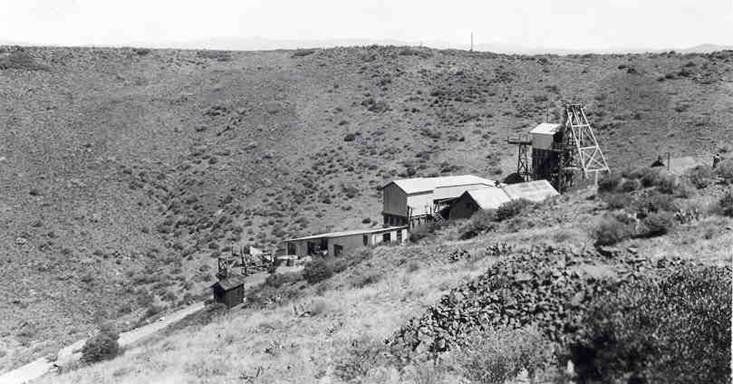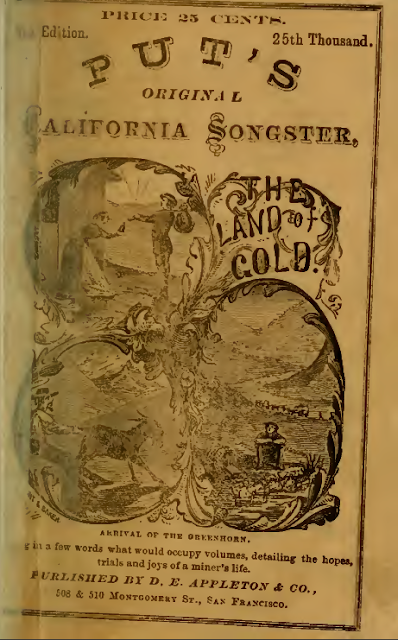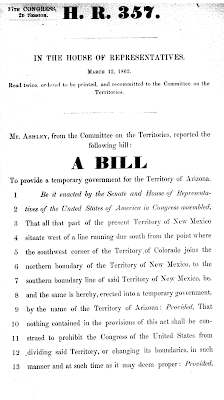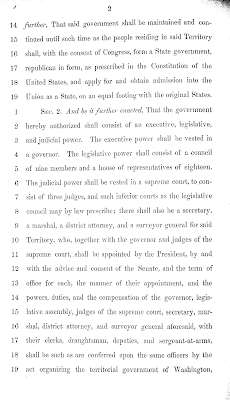Bob Gibney's Blog
Featuring his songs, Arizona historical research, and scheduled appearances
Richinbar Mine

Richinbar Mine - Photo from 1940 - Courtesy of Arizona Geologic Survey files
Friday, January 3, 2014
Scheduled Performance- Tuesday Jan 7 from 7:00 - 8:00 PM at The Mighty Cup Coffee House
I am scheduled to perform next Tuesday Jan 7 from 7:00 to 8:00 PM at the Mighty Cup Coffee House - 7021 N 57th Ave, Glendale. Thanks to Eddie Detroit for inviting me. I will perform a mix of traditional and original songs with my banjo and guitar. I will have some of my new CD's for sale. All people with friendly faces and loud singing voices are welcome.
http://mightycupandspoon.com/
Tuesday, October 1, 2013
SHARLOT HALL FOLK FESTIVAL - OCT 5 AND 6
PRESCOTT, ARIZONA
I am looking forward to performing a set of traditional and original folk songs at the Annual Sharlot Hall Folk Festival. My set is scheduled at 11:30 Sunday in the Amphitheater. Many of my friends will be participating in this event, so I invite you to come up and enjoy the fine entertainment and weather.
Tuesday, June 18, 2013
California As It Is And Was - Lyrics by John A. Stone ("Old Put") Musical Setting and Performance by Robert T. Gibney
This song relates many of the experience of the placer miners during the last years of California's Gold Rush. The narrator reminisces about the simpler days of 1849-50. He laments the coming of the railroad, competition from Chinese laborers, the high price of food, the imposition of taxes, and the political corruption of the time. The song was published in "Put's Original California Songster" - D.E. Appleton & Co. 1855
Friday, June 14, 2013
PUT'S ORIGINAL CALIFORNIA SONGSTER
1855 5TH EDITION 25TH THOUSAND
This is a rare copy of the leading songbook of the California Gold Rush as written by John A. Stone, using the pseudonym "Old Put". I am posting the publishing information and Preface so that the author speaks for himself. This volume demonstrates how the leading professional song writer of the era marketed his songsters to a growing audience. He set his lyrics to melodies of popular songs and priced his songsters at a low price to appeal to a popular audience. Many of his songs have achieved "folk song" status. It is important to recognize the importance of John A. Stone ("Old Put") as the source of many of the West's most enduring songs.
"Giving in a few words what would occupy volumes, detailing the hopes, trials and joys of a miner's life"
Published by D.E. Appleton & Co, 508-510 Montgomery St., San Francisco
Entered according to Act of Congress, in the year 1854 by John A. Stone
Preface
"In dedicating this little Book of Songs to the Miners of California, those hardy builders of California's prosperity and greatness, the author deems it his duty to offer a prefatory remark in regard to the origin of the work and the motive of its publication.
Having been a miner himself for a number of years, he has had ample opportunities of observing, as he has equally shared, the many trials and hardships to which his brethren of the pick and shovel have been exposed, and to which in general they have so patiently, so cheerfully, and even heroically submitted. Hence, ever since the time of his crossing the Plains, in the memorable year of '50, he has been in the habit of noting down a few of the leading items of his experience, and clothing them in the garb of humorous, though not irreverent verse.
Many of his songs may show some hard edges, and he is free to confess, that they may fail to please the more aristocratic portion of the community, who hav but little sympathy with the details, hopes, trials, or joys of the toiling miner's life; but he is confident that the class he addresses will not find them exaggerated, nothing extenuated, nor aught set down "in malice".
In conclusing, he would state, that after having sung them himself at various times and places, and latterly with the assistance of a few gentlemen, known by the name of Sierra Nevada Rangers, the songs have been published at the request of a number of friends; and if the author should thereby succeed in contributing to the amusement of those he is anxious to please, enlivening the long tedious hours of a miner's winter fireside, his pains will not be unrewarded." - San Francisco, Sept., 1855
Wednesday, January 16, 2013
War To The Death - TrueWest Magazine Article
Here is a link to my article that appears in the February edition of TrueWest Magazine. it is about the life and times of William Porter Jones.
http://www.truewestmagazine.com/jcontent/history/history/history-features/4879-war-to-the-death
Will Jones was a young man who left his family in southern Missouri in 1858 to search for gold in the Western Territories. He worked as a placer miner in many of the well known mining camps: Pike's Peak, Colorado; Grass Valley, California; Aurora, Nevada; Hassayampa River, Lynx Creek, Big Bug Creek Arizona from 1859 to 1864.
This is a photo of Joseph Walker, the famous trapper and guide who led the first party of Pioneers to the Prescott area in 1863. Jones encountered the Walker Party in the fall of 1863, after his trek from Aurora, Nevada. Jones worked placer mining claims along the Hassayampa River, Lynx Creek, and Big Bug Creek. He was associated with some of the important leaders of the era: J.T. Alsap, Theodore Boggs, King Woolsey, etc.
The fascinating story of William Jones is included in a collection of nine letters that were donated by his family to the Sharlot Hall Museum.
This is a link to the letters on the Arizona Memory Collection:http://azmemory.azlibrary.gov/cdm/compoundobject/collection/shmwpj/id/71/rec/36


Tuesday, January 8, 2013
150th Anniversary of the Arizona Territory
I am continuing to research the Territorial history of Arizona. February 2013 marks the 150th Anniversary of the formation of the Arizona Territory. The Arizona Territory was formed in the midst of the Civil War. The South claimed the southern portion of Arizona as part of the Confederacy. President Lincoln signed this bill into law on February 24, 1863. Prescott was chosen as the original Territorial Capital, despite the fact that Tucson was a more established town. Tucson was located in the disputed portion of the Territory.
Here is a link to the Library of Congress:
http://lcweb2.loc.gov/cgi-bin/ampage?collId=llhb&fileName=037/llhb037.db&recNum=1985
Tuesday, December 11, 2012
Original Phoenix Townsite Map
Subscribe to:
Comments (Atom)






